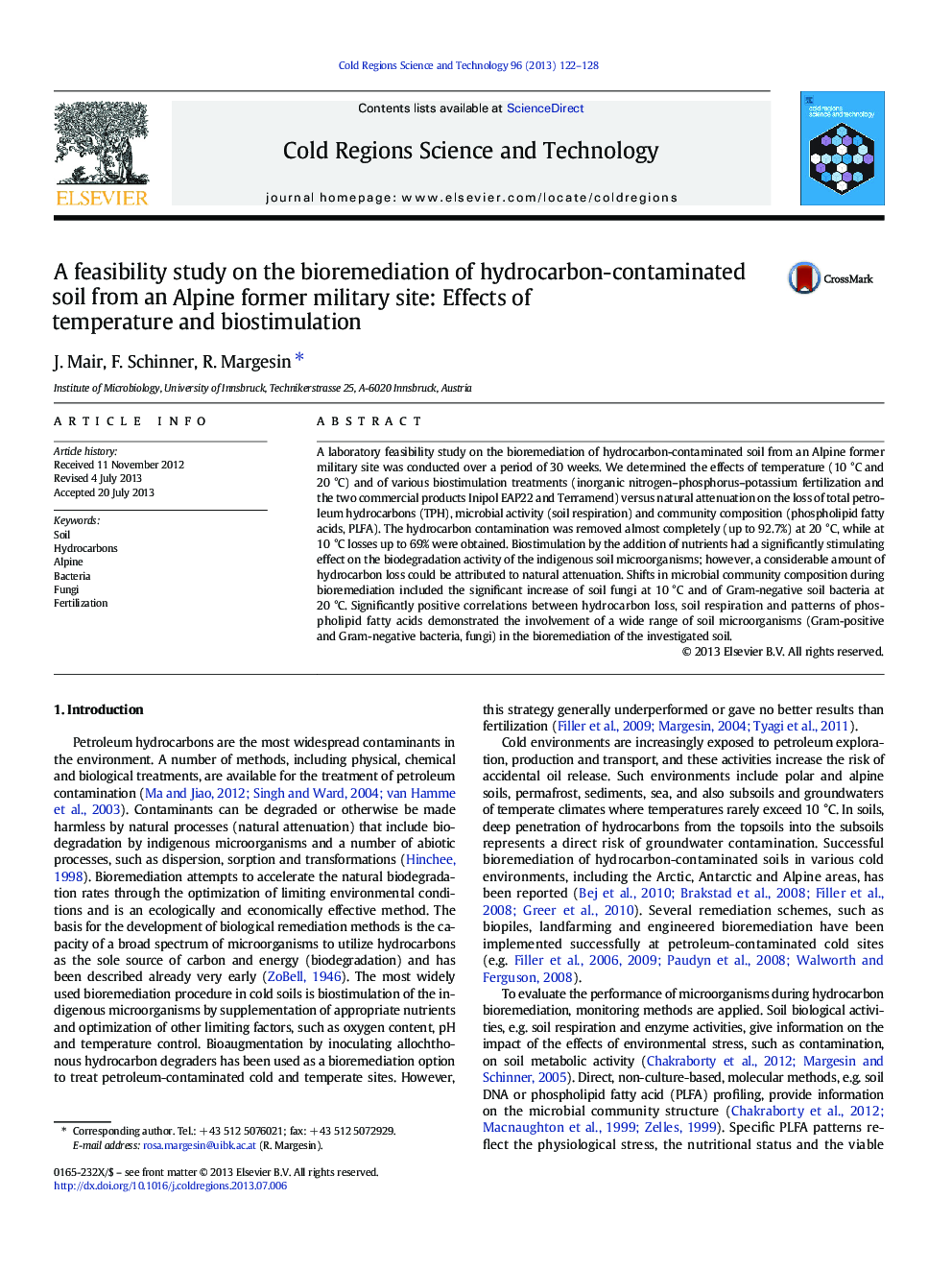| کد مقاله | کد نشریه | سال انتشار | مقاله انگلیسی | نسخه تمام متن |
|---|---|---|---|---|
| 4675818 | 1634466 | 2013 | 7 صفحه PDF | دانلود رایگان |
• Temperature had a significant effect on TPH loss, microbial activity and community structure.
• Natural attenuation played a major role in TPH loss.
• Nutrients stimulated the biodegradation activity of the indigenous soil microorganisms.
• The bioremediation treatment resulted in shifts in soil microbial community composition.
• Soil fungi were enriched at 10 °C; Gram-negative bacteria were enriched at 20 °C.
A laboratory feasibility study on the bioremediation of hydrocarbon-contaminated soil from an Alpine former military site was conducted over a period of 30 weeks. We determined the effects of temperature (10 °C and 20 °C) and of various biostimulation treatments (inorganic nitrogen–phosphorus–potassium fertilization and the two commercial products Inipol EAP22 and Terramend) versus natural attenuation on the loss of total petroleum hydrocarbons (TPH), microbial activity (soil respiration) and community composition (phospholipid fatty acids, PLFA). The hydrocarbon contamination was removed almost completely (up to 92.7%) at 20 °C, while at 10 °C losses up to 69% were obtained. Biostimulation by the addition of nutrients had a significantly stimulating effect on the biodegradation activity of the indigenous soil microorganisms; however, a considerable amount of hydrocarbon loss could be attributed to natural attenuation. Shifts in microbial community composition during bioremediation included the significant increase of soil fungi at 10 °C and of Gram-negative soil bacteria at 20 °C. Significantly positive correlations between hydrocarbon loss, soil respiration and patterns of phospholipid fatty acids demonstrated the involvement of a wide range of soil microorganisms (Gram-positive and Gram-negative bacteria, fungi) in the bioremediation of the investigated soil.
Journal: Cold Regions Science and Technology - Volume 96, December 2013, Pages 122–128
